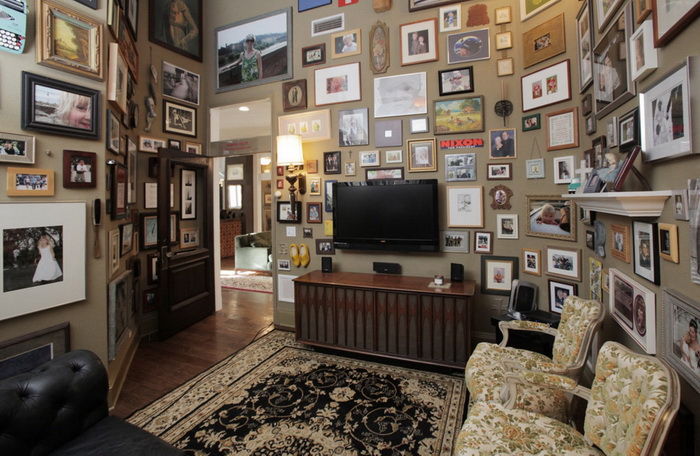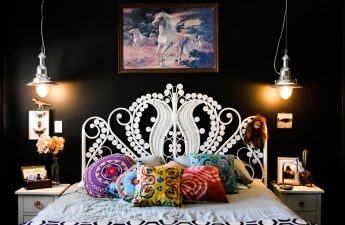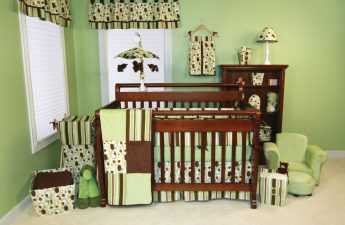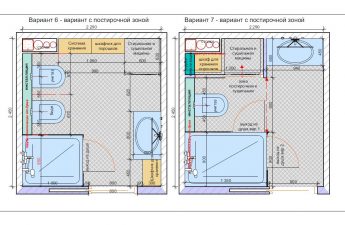Pictures can transform and spoil the interior. And we are not only talking about what is depicted on them, but also about exactly how they are placed, where and in what quantity. You give art to the masses! But only correctly and accurately. How exactly - we will teach Do not think that finally choosing one of the watercolor landscapes or avant-garde posters for decorating the interior, you have closed the issue of art in the house. One painting pulls the other, especially successful photos, too, and are asked to wall. How to make friends with each other shapes, sizes and styles? Are there any rules? Of course, they are.
1. The rule of eye level
Western designers call it "rule 57inches "- this is an approximate level of view of the average person, about 145-150 centimeters from the floor. At this point, the center of the canvas should be located in order to view the image in the best way each could. By the way, in museums, the pictures are usually hung at an altitude of 152 centimeters - that is a little higher, because in large halls there is an opportunity to take a step back. 
2. Pictures above the sofa - layouts
A logical place for art objects ininterior - in the living room above. Immediately grab attention when entering the house, but do not distract, for example, when watching a movie. Choose - one large picture, 2-3 medium or several small ones. There are ready-made schemes that take into account the combination of the size and shape of the frames with the general proportions of furniture and the room - try one of the options. Limit yourself to one painting that fits the scale of the sofa, or combine a large poster with medium and small ones to adequately fill the space. And the choice of specific images on them will already be a test of your artistic taste. 

 Our opinion: - Advice:there is no law that prohibits you from hanging portraits and landscapes, still lifes and posters with pop art style on one wall, but try to make several paintings still have something in common - genre, color scheme, theme, size of details. This will make the composition more harmonious. Three is a great number of items to compose. This also applies to pictures. And if the frames are rather small and the same, create a rhythmic composition of two or three rows, three patterns in each.
Our opinion: - Advice:there is no law that prohibits you from hanging portraits and landscapes, still lifes and posters with pop art style on one wall, but try to make several paintings still have something in common - genre, color scheme, theme, size of details. This will make the composition more harmonious. Three is a great number of items to compose. This also applies to pictures. And if the frames are rather small and the same, create a rhythmic composition of two or three rows, three patterns in each. 

 Symmetry is certainly pleasant to humaneye condition, but here's the monotony - no. So boldly move the picture to the right or left, if on the opposite side of the sofa, too, there is something to look at - a large vase or an unusual lamp for example.
Symmetry is certainly pleasant to humaneye condition, but here's the monotony - no. So boldly move the picture to the right or left, if on the opposite side of the sofa, too, there is something to look at - a large vase or an unusual lamp for example. 

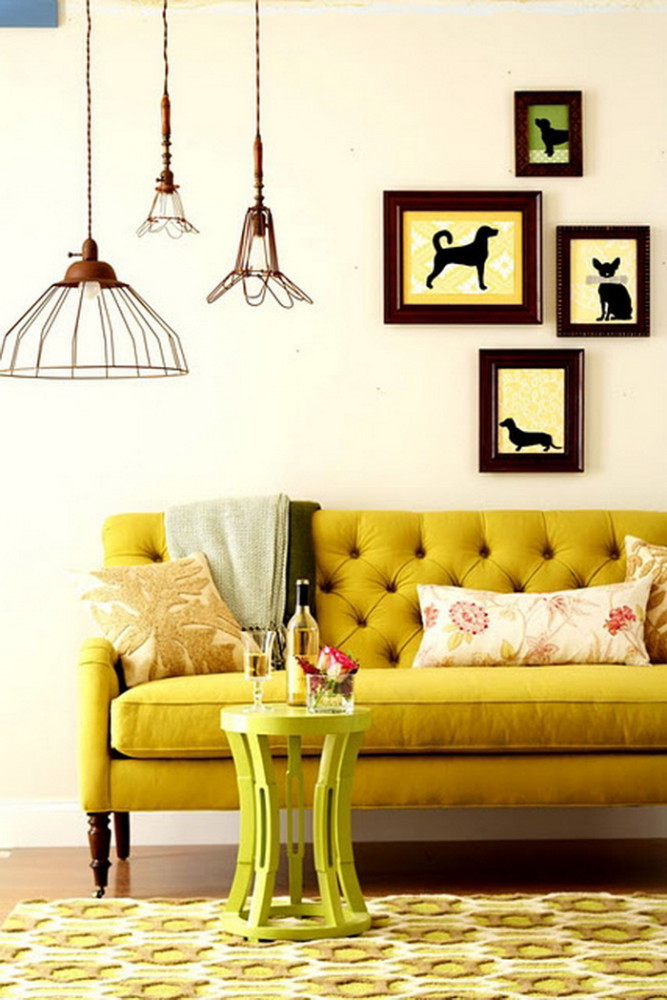 Our opinion: - Advice: fill at least two-thirds of the width of the sofa with pictures above it. If you go beyond - furniture will seem insignificant, and if you can not take enough space - the pictures will not look so attractive.
Our opinion: - Advice: fill at least two-thirds of the width of the sofa with pictures above it. If you go beyond - furniture will seem insignificant, and if you can not take enough space - the pictures will not look so attractive.
3. Wall as in the gallery
If the number of pictures exceeds 3-4 pieces, andplaces above the sofa are not enough, you can go beyond all sorts of limits. This technique is reminiscent of placing art objects in art galleries - they occupy most of the wall and are a way, rather, to showcase the collection than just add a little brightness to the interior.  First of all, choose a suitable location -a free, well-lit wall. An interesting option can be, with a sufficient level of backlighting, of course. Another is corner placement as a way to combine the two zones. Your collection will be the main attention-grabber, so don't place it in the same room as the furniture you are particularly proud of - it might just be overlooked.
First of all, choose a suitable location -a free, well-lit wall. An interesting option can be, with a sufficient level of backlighting, of course. Another is corner placement as a way to combine the two zones. Your collection will be the main attention-grabber, so don't place it in the same room as the furniture you are particularly proud of - it might just be overlooked. 
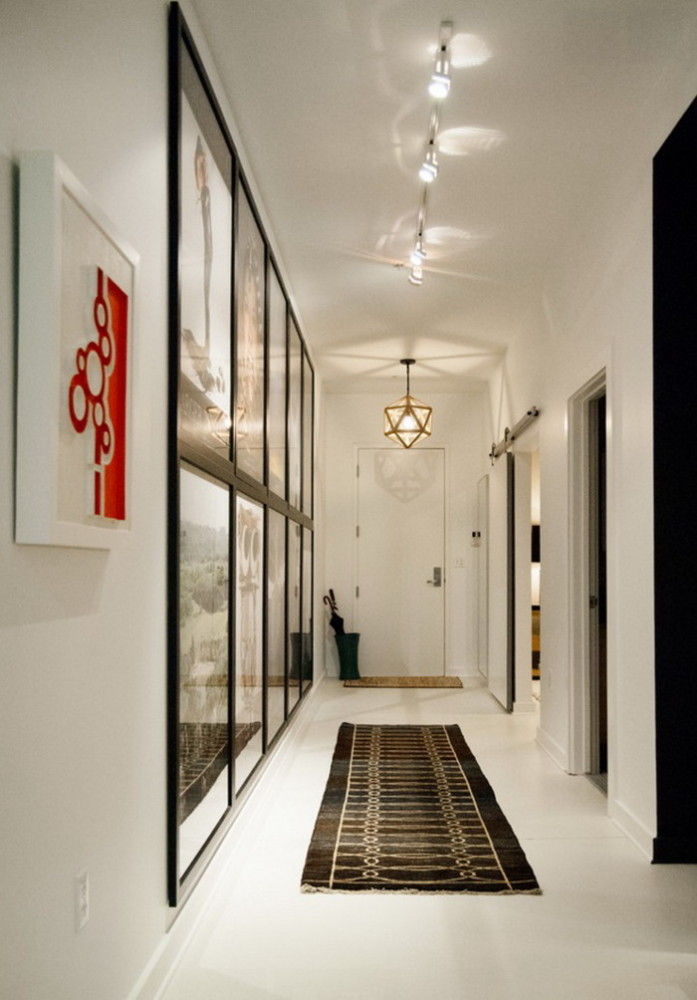 The picture frames should not be exactly the same, but something should unite them - color solution, size, shape, materials.
The picture frames should not be exactly the same, but something should unite them - color solution, size, shape, materials. 
 Our opinion: - Advice:choose pictures that you really like. You will have to talk a lot about them with your guests, and stories like “I bought this photo at a flea market in Vienna because it reminded me of my childhood” will create a much more attractive impression of you than “I just bought it in the same store where a sofa was on sale. " A powerful tool for creating great compositions is using a key element. This is the center of attention, a picture that stands out (but not too much) from the group in color, size, style. The rest of the elements line up around it - from the center to the periphery.
Our opinion: - Advice:choose pictures that you really like. You will have to talk a lot about them with your guests, and stories like “I bought this photo at a flea market in Vienna because it reminded me of my childhood” will create a much more attractive impression of you than “I just bought it in the same store where a sofa was on sale. " A powerful tool for creating great compositions is using a key element. This is the center of attention, a picture that stands out (but not too much) from the group in color, size, style. The rest of the elements line up around it - from the center to the periphery. 
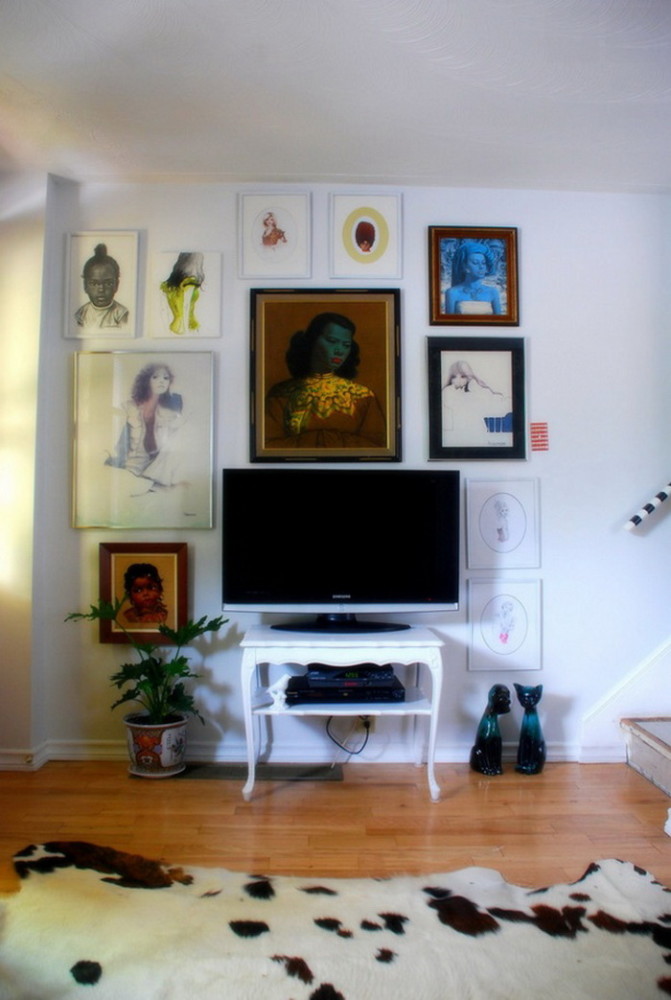 Our opinion:- To plan your composition, first place the paintings on the floor. Then cut out rectangles of their sizes from wrapping paper or colored cardboard and repeat the idea already on the wall - first from the "ersatz pictures". And only when you are completely sure of the result, proceed with the final placement. - a very important point. Consider additional lighting for the evening, and during the day, let the natural light help your paintings stand out and impress.
Our opinion:- To plan your composition, first place the paintings on the floor. Then cut out rectangles of their sizes from wrapping paper or colored cardboard and repeat the idea already on the wall - first from the "ersatz pictures". And only when you are completely sure of the result, proceed with the final placement. - a very important point. Consider additional lighting for the evening, and during the day, let the natural light help your paintings stand out and impress. 
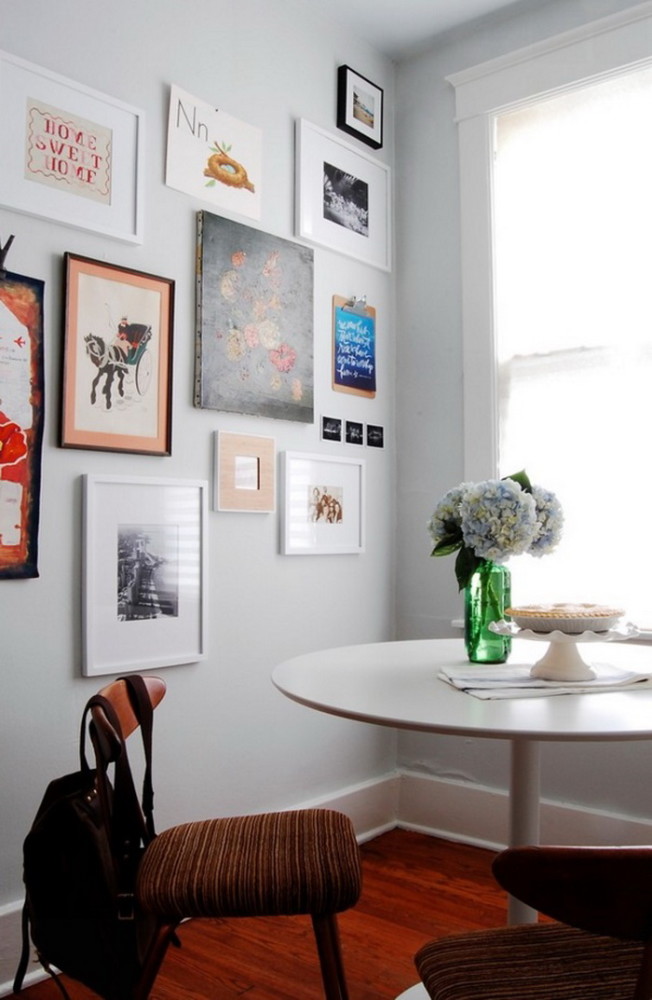 Our opinion: - Advice: for lighting choose halogen bulbs with white light, not distorting the colors of colors. Adjust it, pointing at the picture, until all the glare and glare are gone.
Our opinion: - Advice: for lighting choose halogen bulbs with white light, not distorting the colors of colors. Adjust it, pointing at the picture, until all the glare and glare are gone.
4. Pictures and personality type
Think about what pictures and other art ininterior - this is an explicit and straightforward message to the world about who you are or what you want to seem. Hang up your child's drawings, if the family is important for you, or create a gallery of seascapes if you like to travel. Collect an eclectic collection of engravings, watercolors and photos in different styles, if you are a multi-faceted person. Or use the wall as a "board of inspiration" and visualize your dreams and desires. 
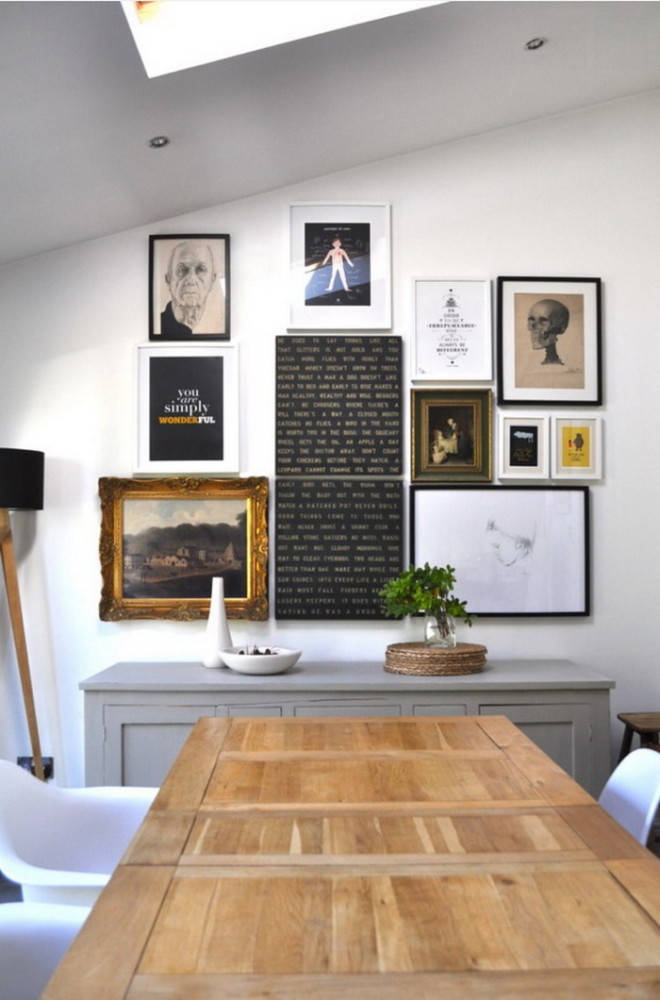 Of course, for different types of personality, different methods of creating and placing a composition from pictures are suitable.
Of course, for different types of personality, different methods of creating and placing a composition from pictures are suitable. 


5. Quantity and quality
So how many pictures can you hang on the wall? It is only a question of your artistic taste and the possibilities of the wall. But leave the place, do not overload the information of the potential viewer. A room in which there are too many pictures, has the right to exist as a corner of the owner's memories and reflections - but the guests there, most likely, will be uncomfortably long. 